

|
|
Mine Own Executioner
[Blu-ray]
Blu-ray B - United Kingdom - Network Review written by and copyright: Paul Lewis (17th March 2015). |
|
The Film
 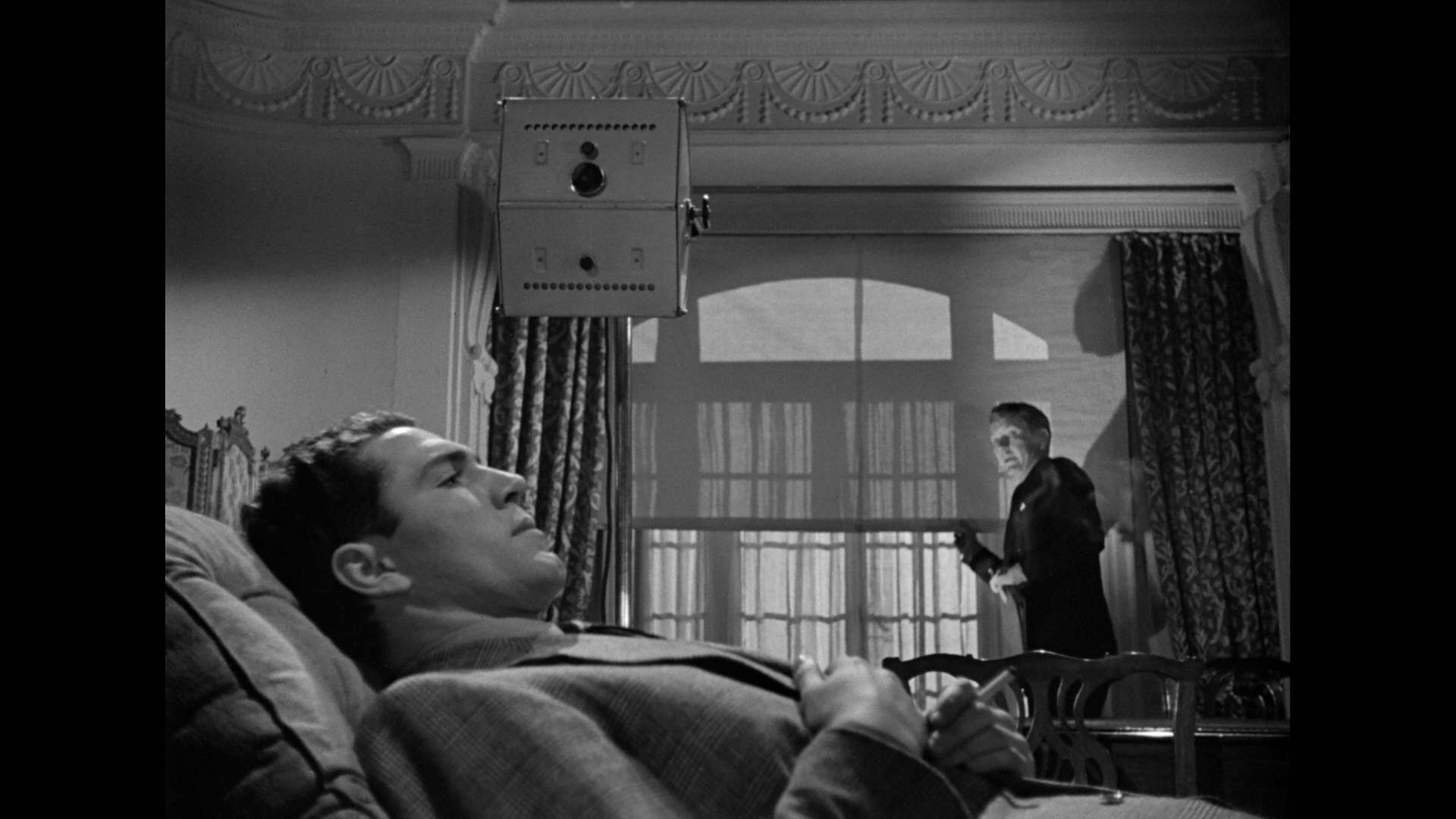 Mine Own Executioner (Anthony Kimmins, 1947) Mine Own Executioner (Anthony Kimmins, 1947)
Based on the novel by Nigel Balchin, Anthony Kimmins’ Mine Own Executioner (1947) stars the American actor Burgess Meredith as lay analyst Felix Milne. Milne divides his time between his private patients, who pay his bills, and his work for a free clinic, the Emily Ward Psychiatric Clinic. There Milne and others, including Milne’s friend Dr James Garsten (John Laurie), offer their expertise to those who need it the most but are unable to afford a private consultation. However, the Emily Ward Psychiatric Clinic is under pressure to acquire new sources of funding, and to that end has approached Sir George Freethorne (Edgar Norfolk). However, Freethorne disapproves of the clinic’s use of an ‘unqualified’ lay analyst like Milne. At home, Milne experiences a strained relationship with his wife Patricia (Dulcie Gray), whom Milne has threatened to leave. He is also involved with his patient (and the friend of his wife) Barbara Edge (Christine Norden). When Milne is approached by a young woman, Molly Lucian (Barbara White), who claims her husband Adam (Kieron Moore) tried to strangle her, Milne is intrigued. Adam Lucian was a pilot in the Royal Air Force whose plane was shot down by Japanese troops and who was taken as a prisoner of war but managed to escape after killing one of his guards. Adam, Molly tells Milne, refuses to see a doctor but may be willing to undergo therapy with a lay analyst such as Milne himself. 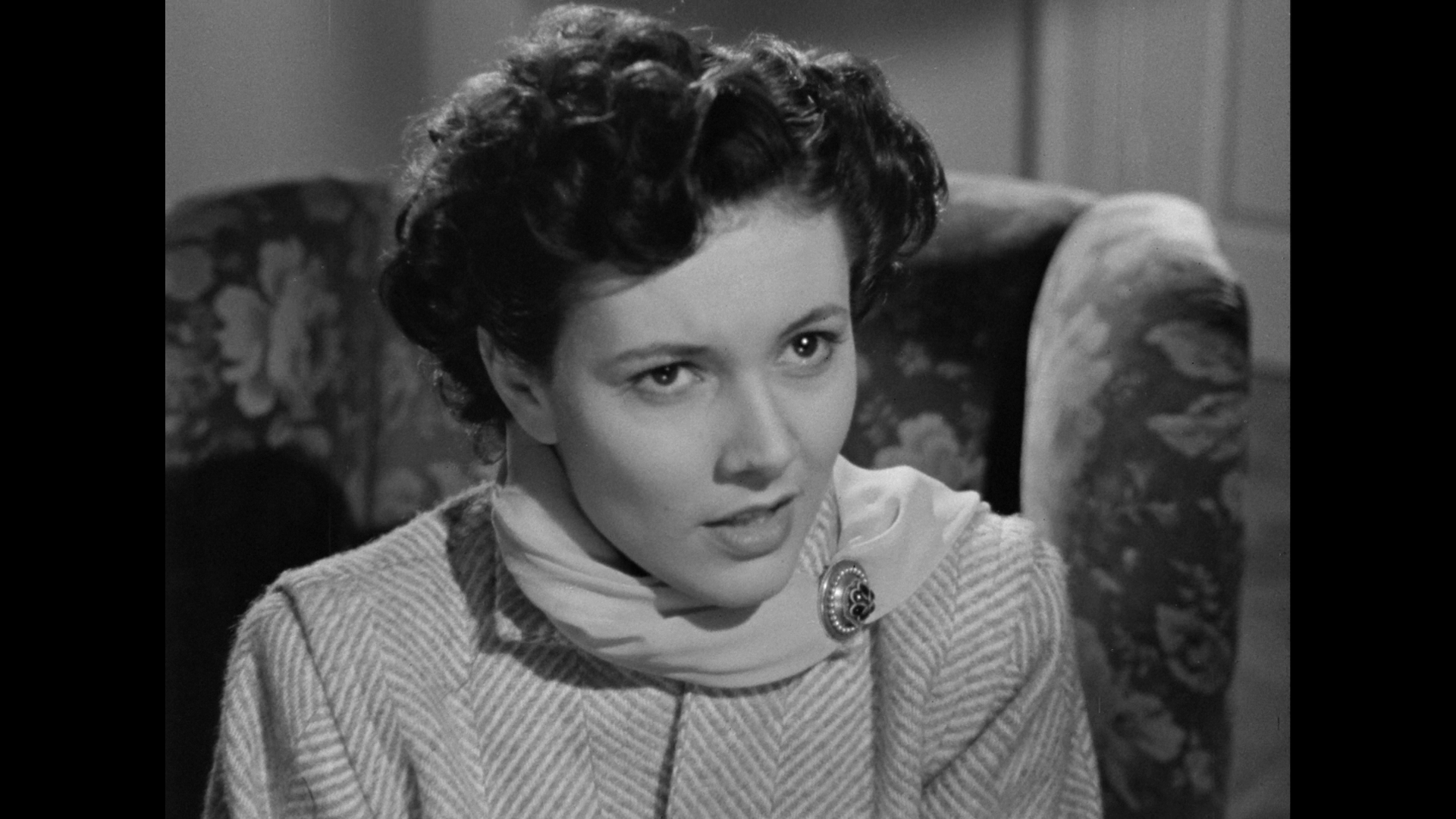 Agreeing to treat Adam Lucian, Milne appears to make headway during their preliminary sessions. Milne still sees Lucian as potentially dangerous, though, and suggests Molly move out of their home for a while. Molly refuses. Meanwhile, Milne’s work at the clinic is increasingly strained by Sir George’s dislike of Milne’s lack of formal training. Sir George offers an ultimatum: the clinic must let Milne go or else wave goodbye to its new source of funding. With this on his mind, and a sensation of feeling under the weather, against his better judgement Milne decides to cancel one of his sessions with Lucian. This precipitates a series of events which results in Lucian shooting Molly; as if to confirm Milne’s level of complicity within this event, Lucian’s murder of his wife is crosscut with Milne’s seduction of Barbara. Feeling responsible for Molly’s death, Milne becomes determined to aid the police in their pursuit of Adam Lucian. Agreeing to treat Adam Lucian, Milne appears to make headway during their preliminary sessions. Milne still sees Lucian as potentially dangerous, though, and suggests Molly move out of their home for a while. Molly refuses. Meanwhile, Milne’s work at the clinic is increasingly strained by Sir George’s dislike of Milne’s lack of formal training. Sir George offers an ultimatum: the clinic must let Milne go or else wave goodbye to its new source of funding. With this on his mind, and a sensation of feeling under the weather, against his better judgement Milne decides to cancel one of his sessions with Lucian. This precipitates a series of events which results in Lucian shooting Molly; as if to confirm Milne’s level of complicity within this event, Lucian’s murder of his wife is crosscut with Milne’s seduction of Barbara. Feeling responsible for Molly’s death, Milne becomes determined to aid the police in their pursuit of Adam Lucian.
Geoff Mayer has identified Mine Own Executioner as part of a group of films made after the Second World War which ‘examined the psychological and physical effects of the war on the combatants’ (Mayer, 2003: 286). This group of films, Andrew Spicer has argued, offered a subversive interpretation of the effects of the war that countered the ‘Blitz Myth’ (the ‘heroic story of courage, endurance and pulling together which obliterated class divisions and political allegiances’) by focusing on ‘the maladjusted veteran, the “damaged man” psychologically and ideologically unfit for peacetime civilian life, depicting the war as a traumatizing experience’ (Spicer, 2004: 167). Robert Murphy allies Mine Own Executioner with Powell and Pressburger’s The Small Back Room: both pictures, Murphy says, contain ‘obviously war-damaged protagonists’ and ‘qualify as morbid films in their lighting style and general atmosphere’ (Murphy, 1989: 150). The film offers much engagement with the practice of psychiatry. Early in the film, one of Milne’s colleagues at the clinic, a German psychiatrist named Dr Hans Tautz (Martin Miller), asserts that in psychiatry, ‘There must be action, see. You sit and sit, and talk and talk, and where does it get you?’ A patient, Tautz posits, must be allowed to act out their aggression in some way. Later, Milne is asked by Peter Edge (Michael Shepley), ‘Do you think it does any good, this digging about in their [his patients’] minds?’ ‘Sometimes’, Milne responds. ‘What would you do to me?’, Peter asks. ‘I wouldn’t do anything to you’, Milne tells him, ‘I’d just get you to talk’. Later, at a party, Milne is irritated by an advertising man’s attempts to court Milne and use his expertise to craft his advertising campaigns: ‘There is no “pure” psychology’, Milne tells this man, ‘It’s not a “pure” subject’. There is also an acknowlegdement that psychiatry offers little comfort to the practitioner: at one point, Garsten tells Milne, ‘this racket of ours [is i]nvaluable for other people’s anxieties and neuroses, but it just won’t wash your own dirty linen’. 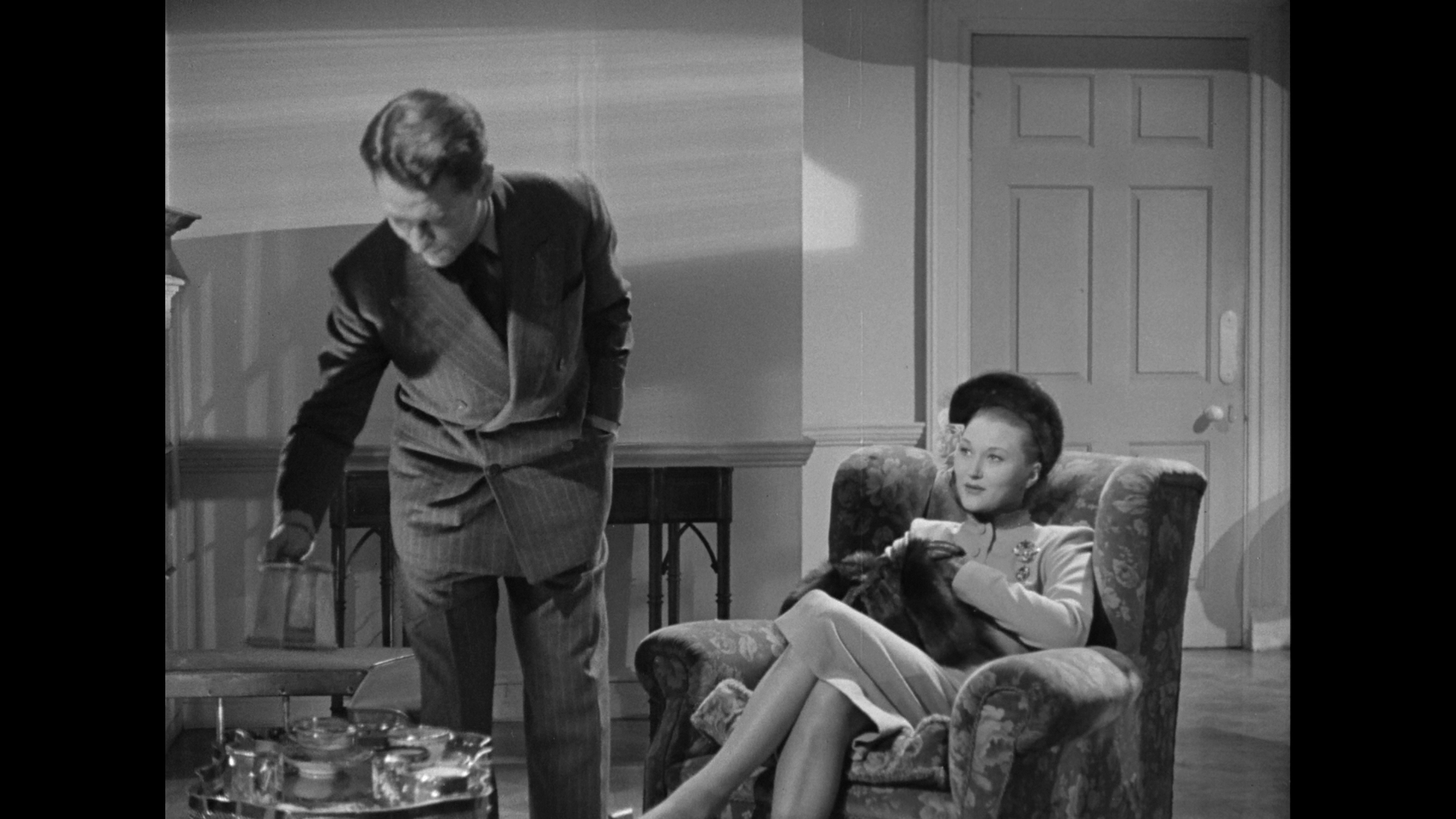 The film also places in tension Milne’s socially-minded work at the clinic and his work with private patients. ‘Listen to Harley Street’, Milne says at one point in reference to his private patients, ‘Relieve their wallets and you relieve their minds’. However, Milne finds his private work unrewarding, telling his wife that ‘Outside the clinic my [private] patients are all variations of Lady M: they’re all distressingly normal and want to be cured of it. They don’t matter a hoot to society, any of them’. On the other hand, Milne is impassioned by his work at the clinic. These two worlds overlap, of course, when Milne takes on the job of helping Molly and Adam Lucian: Lucian is unable to pay the fees for his private sessions with Milne, but Milne sees Lucian in Milne’s own home rather than at the clinic. At the end of the film, Milne has been cleared of any direct responsibility in the actions of Lucian but is still wracked by guilt and, having been expelled from the clinic by Sir George’s dislike of Milne’s lack of any formal qualifications, decides to leave his work as a lay analyst behind. That is, until Patricia tells him he has a final appointment – with a child patient who Milne has previously been treating at the clinic, and who has sought Milne’s help outside the clinic. Again, Milne’s private sessions and his ‘free’, socially-minded work collide, with the suggestion that alienated by his work with his private clinics, which throughout the film he has found frustrating, Milne will continue to offer his services as a lay analyst to those who need them and are unwilling to pay – but outside the strictures put in place by the clinic. The film also places in tension Milne’s socially-minded work at the clinic and his work with private patients. ‘Listen to Harley Street’, Milne says at one point in reference to his private patients, ‘Relieve their wallets and you relieve their minds’. However, Milne finds his private work unrewarding, telling his wife that ‘Outside the clinic my [private] patients are all variations of Lady M: they’re all distressingly normal and want to be cured of it. They don’t matter a hoot to society, any of them’. On the other hand, Milne is impassioned by his work at the clinic. These two worlds overlap, of course, when Milne takes on the job of helping Molly and Adam Lucian: Lucian is unable to pay the fees for his private sessions with Milne, but Milne sees Lucian in Milne’s own home rather than at the clinic. At the end of the film, Milne has been cleared of any direct responsibility in the actions of Lucian but is still wracked by guilt and, having been expelled from the clinic by Sir George’s dislike of Milne’s lack of any formal qualifications, decides to leave his work as a lay analyst behind. That is, until Patricia tells him he has a final appointment – with a child patient who Milne has previously been treating at the clinic, and who has sought Milne’s help outside the clinic. Again, Milne’s private sessions and his ‘free’, socially-minded work collide, with the suggestion that alienated by his work with his private clinics, which throughout the film he has found frustrating, Milne will continue to offer his services as a lay analyst to those who need them and are unwilling to pay – but outside the strictures put in place by the clinic.
From the outset, Milne’s relationship with his wife Patricia is fractious and defined by Milne’s ambivalent attitude towards her – something which later in the film, Milne suggests may be part of a psychological problem of his own. Throughout the film, Milne demonstrates strange tics – rubbing the bowl of his pipe under each eye ritualistically, waving his index finger widely in the flame of his lighter. He admits to Pat that he has a strangely childish sensibility at times, realising that he ‘nags’ and ‘bullies’ her (he calls her ‘Rhino’ owing to her clumsiness) without foundation. In her first appearance in the film, Pat breaks a glass and fusses about whilst apologising to Milne. ‘Look, darling’, Milne tells her, ‘I don’t mind you smashing tumblers, even rather nice ones, but don’t do a “baby mine” about it’. Milne has already threatened to leave Pat. The tensions in their marriage mirror the problems faced by the Lucians – though Molly and Adam are very much in love, Adam is prone to moments of delusion in which he perceives Molly as one of the captors from his time as a POW. ‘He’s had a go at murdering me tonight’, Molly tells Milne matter-of-factly when she first approaches him for help.  When the Milnes’ friend Peter Edge (Michael Shepley) approaches Milne and asks him to help with Peter’s wife Barbara, who Peter says has ‘a bit of a sex complex’, Milne’s subsequent gradual attempts to seduce Barbara seem to exploit his awareness of her perceived ‘problem’ and her seeming attraction towards Milne. ‘There’s nothing worse than a man who makes you take off your self-respect… and leave your clothes on’, Barbara tells Milne at the end of their first session. When the Milnes’ friend Peter Edge (Michael Shepley) approaches Milne and asks him to help with Peter’s wife Barbara, who Peter says has ‘a bit of a sex complex’, Milne’s subsequent gradual attempts to seduce Barbara seem to exploit his awareness of her perceived ‘problem’ and her seeming attraction towards Milne. ‘There’s nothing worse than a man who makes you take off your self-respect… and leave your clothes on’, Barbara tells Milne at the end of their first session.
In his autobiography, Freddie Francis suggested that Mine Own Executioner ‘was, and still is, seen as the first adult drama featuring real people to emerge from a British studio’ (Francis, 2013: 52). However, the film’s director, Anthony Kimmins, had a stronger association with comedies than with dramas, and Francis has claimed that he perceived Kimmins as one of ‘a number of directors in those postwar days who struck me as leftovers from that prewar era of filmmaking, and were more interested in the fame than directing’ (ibid.). Despite this, Francis asserts, Mine Own Executioner ended up being ‘one of his [Kimmins’] best’ (ibid.) Geoff Mayer claims that the finished film shows ‘overt signs of studio (and possible censorship interference) [sic] affecting the character motivation and narrative coherence’ (Mayer, op cit.: 286). However, despite this, Mayer says, ‘the film retains its bitter, downbeat climax’ (ibid.). The film is presented uncut and with a running time of 109:02 mins.
Video
Taking up approximately 21Gb of space on a single-layered Blu-ray disc, this presentation of the film is in 1080p and uses the AVC codec. The film, in its intended aspect ratio of 1.33:1, displays a crisp, detailed image and good contrast levels which serve the monochrome photography well. Some print damage is evidence here and there – mostly vertical scratches, which are notoriously difficult to remove. Occasionally the highlights look just a little too ‘hot’ (eg, white areas in people’s faces lose detail). Natural film grain is evident but sometimes there’s a softness to the image that may be the result of the application of digital noise reduction or perhaps, more likely, a slightly ‘crushed’ encode to disc. 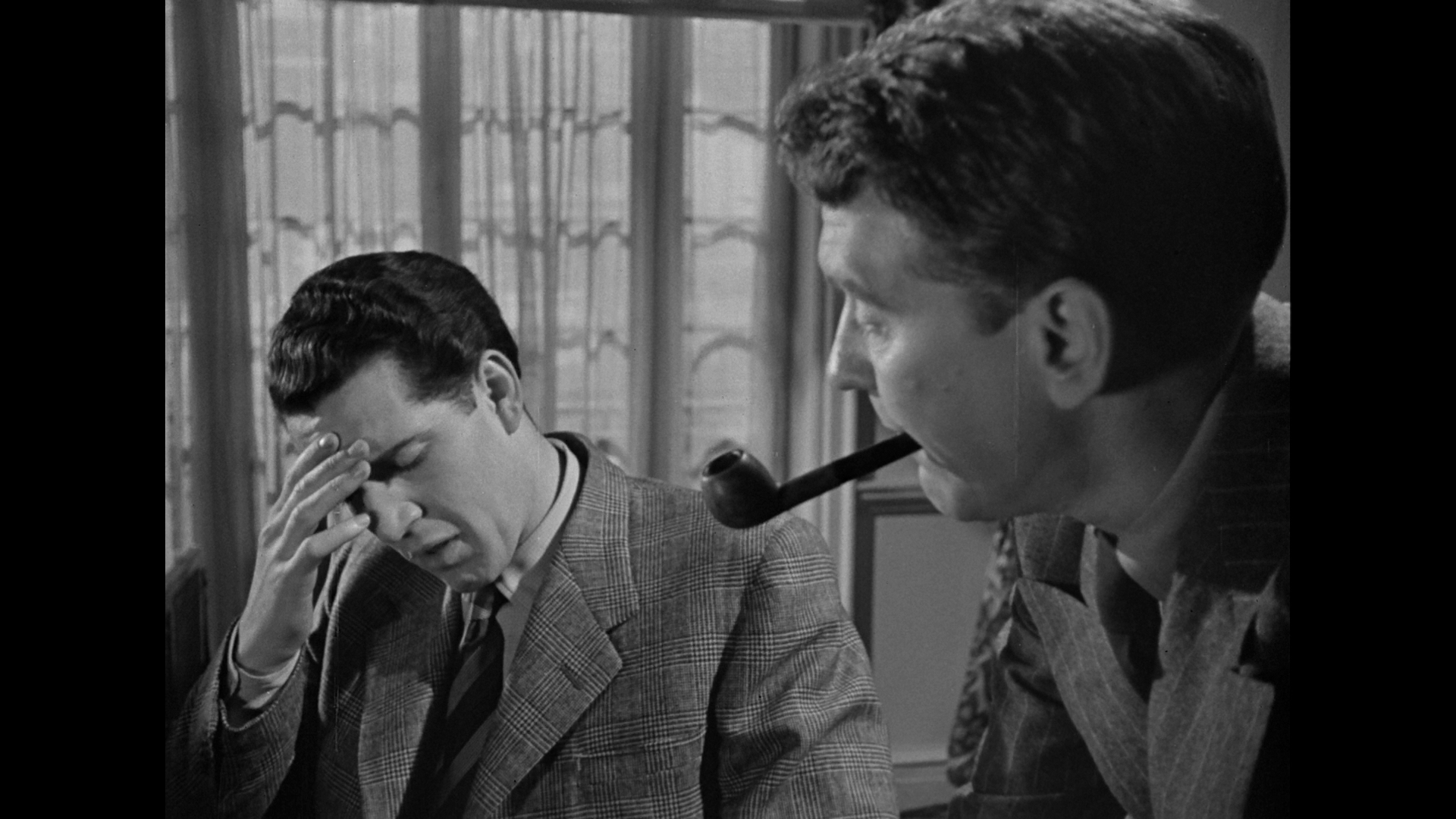 
Much of the film is admittedly flatly shot, except for a bravura sequence in which Milne administers pentathol to Lucian and elicits from his patient the narrative of Lucian’s time as a POW. As Lucian tells his story in the third person, distancing himself from it, we see it unfold on screen – all via first-person point-of-view shots, including the moment during which Lucian’s aeroplane is shot down, his capture by the Japanese troops, and his eventual escape. NB. Some larger screen grabs are included at the bottom of this review.
Audio
Audio is presented via a LPCM 2.0 mono track. Dialogue is audible throughout. From time to time there is some background hiss, and in a couple of sequences, noticeably towards the end of the picture, there are some very brief audio dropouts which are most likely from the source material. Optional English HoH subtitles are included.
Extras
The sole ‘extra’ is a stills gallery (0:41).
Overall
 Mine Own Executioner is a fascinating film, largely thanks to the performance of Burgess Meredith as Milne but also due to the challenge it (like The Small Back Room, for example) poses to the ‘Blitz Myth’. Mine Own Executioner has been largely forgotten but this release from Network will hopefully raise its profile and lead to it being more widely-seen. There’s a sad dearth of contextual material on this release, but the presentation of the film itself is for the most part very pleasing. Mine Own Executioner is a fascinating film, largely thanks to the performance of Burgess Meredith as Milne but also due to the challenge it (like The Small Back Room, for example) poses to the ‘Blitz Myth’. Mine Own Executioner has been largely forgotten but this release from Network will hopefully raise its profile and lead to it being more widely-seen. There’s a sad dearth of contextual material on this release, but the presentation of the film itself is for the most part very pleasing.
Reference: Francis, Freddie, 2013: Freddie Francis: The Straight Story from Moby Dick to Glory. Plymouth: Scarecrow Press Mayer, Geoff, 2003: Guide to British Cinema. London: Greenwood Publishing Murphy, Robert, 1989: Realism and Tinsel: Cinema and Society in Britain 1939-1949. London: Routledge Spicer, Andrew, 2004: ‘The “other war”: subversive images of the Second World War in service comedies’. In: Caunce, Stephen et al (eds), 2004: Studies in Popular Culture: Relocating Britishness. Manchester University Press: 167-82 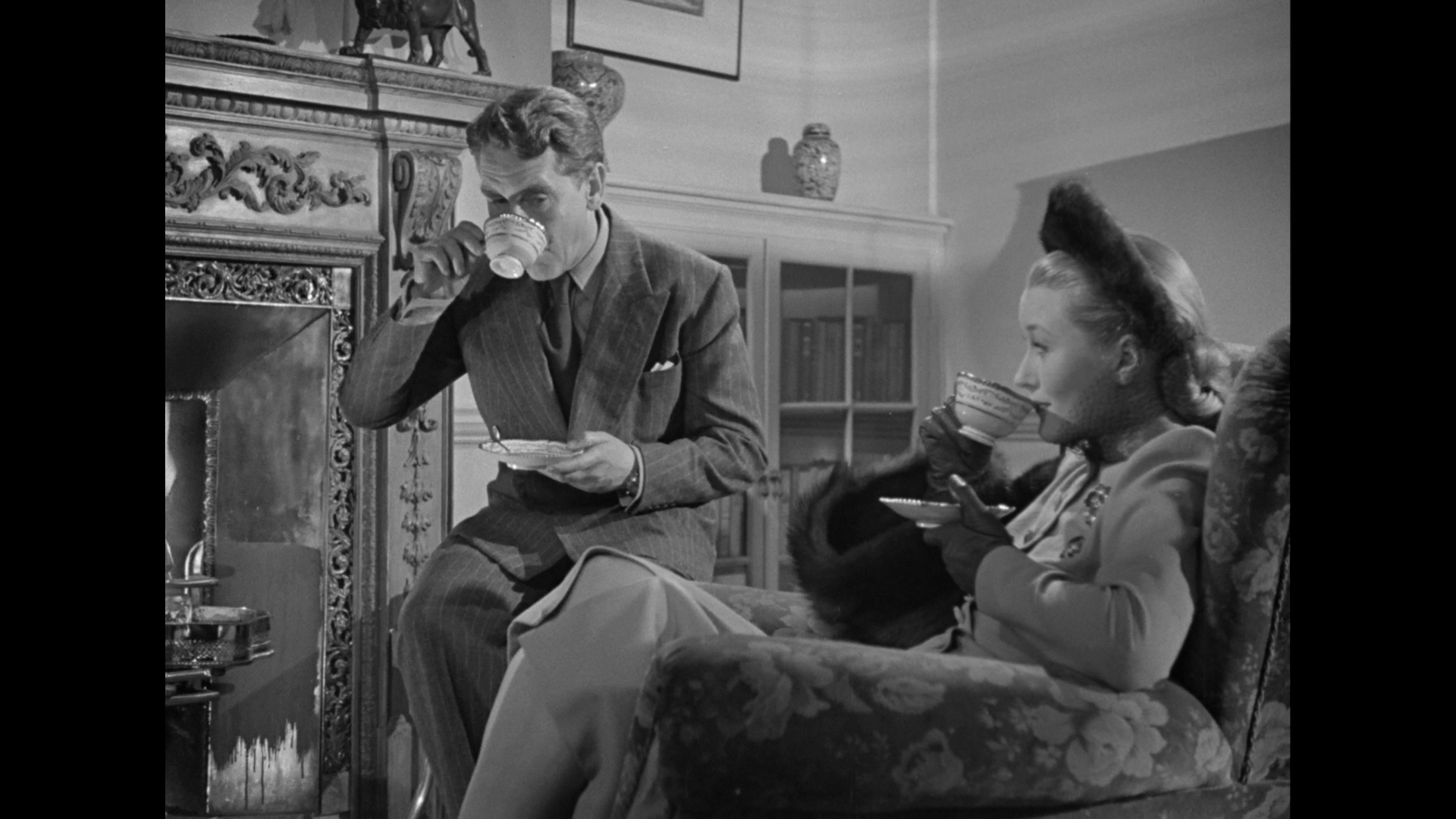


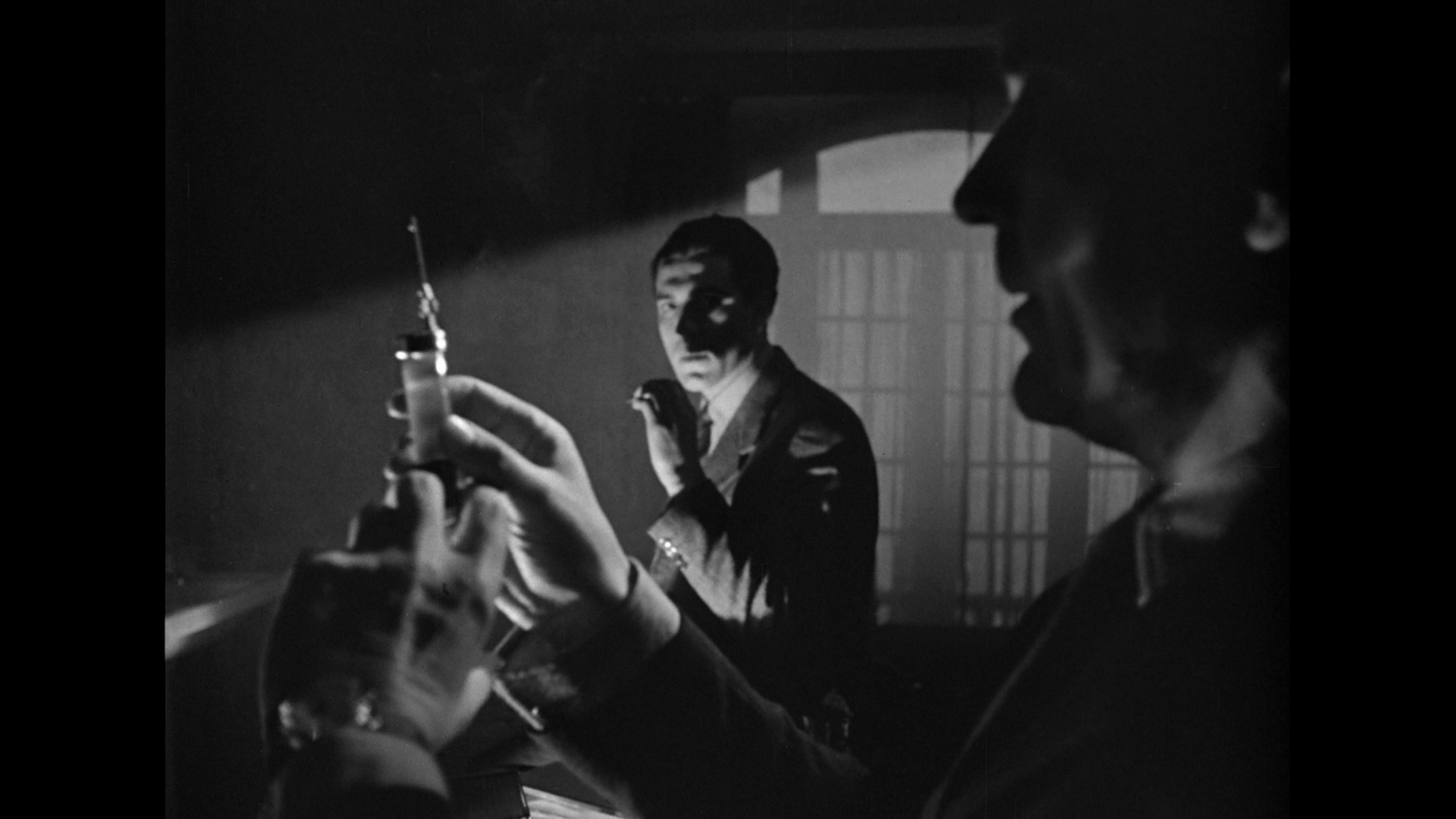
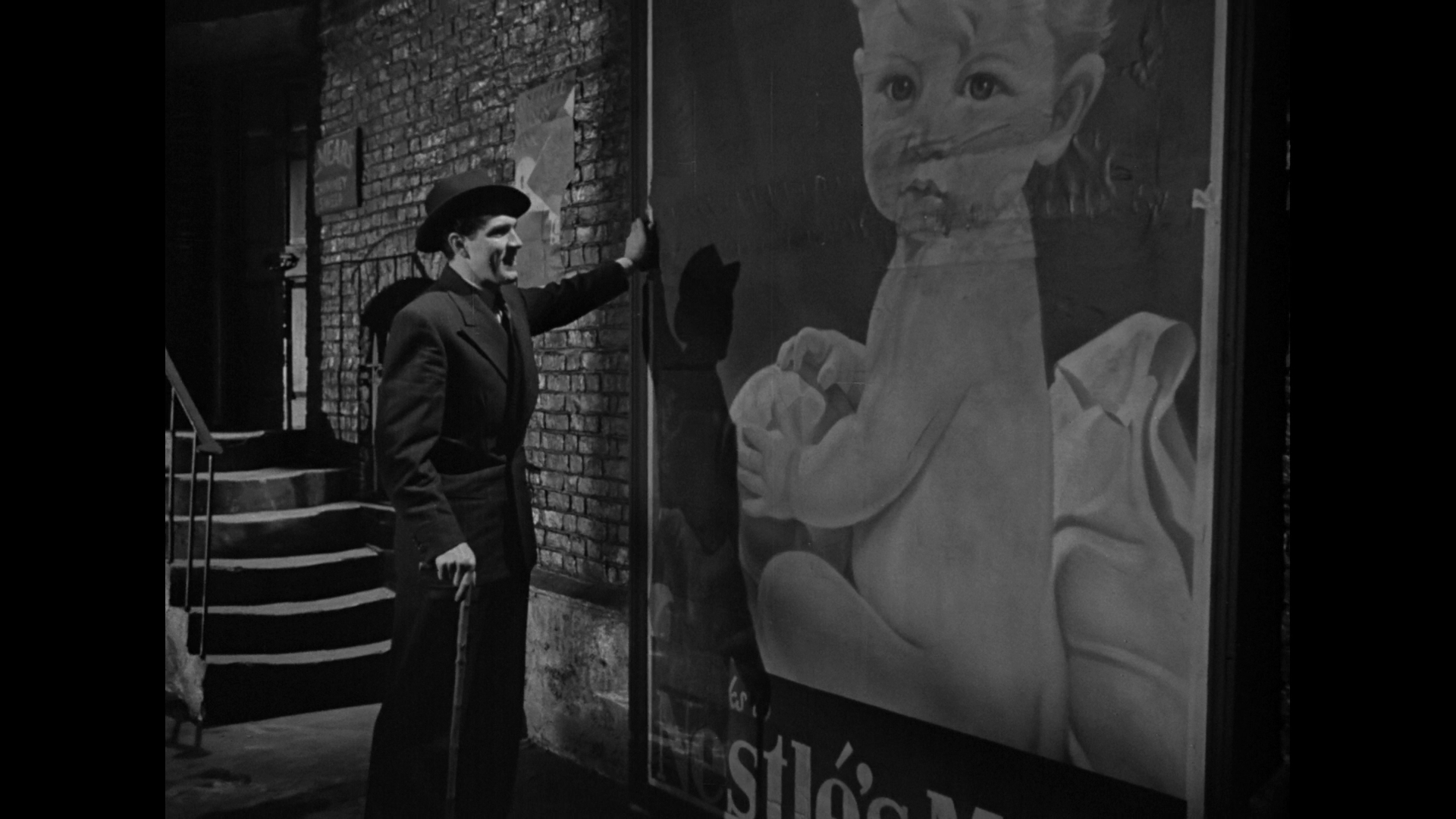
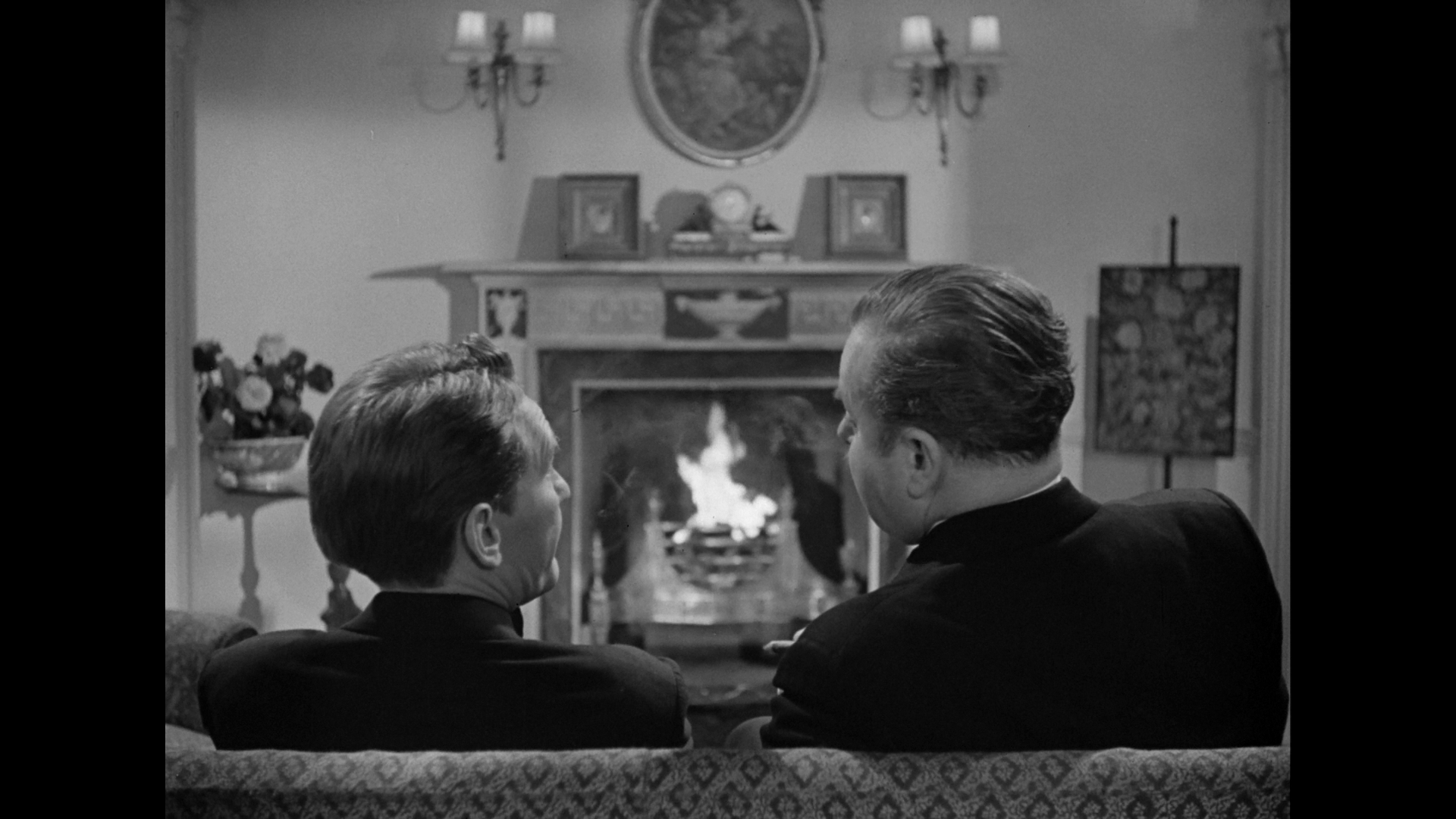
This review has been kindly sponsored by: 
|
|||||

|